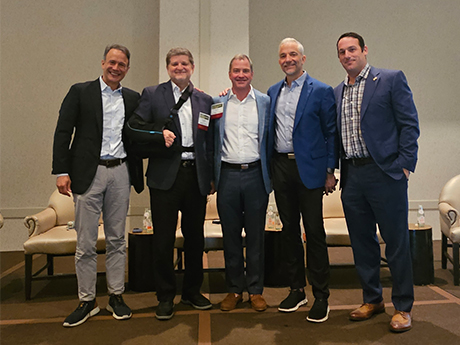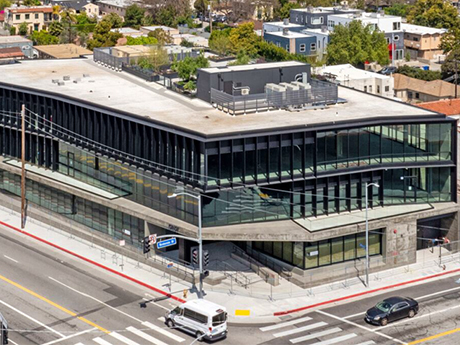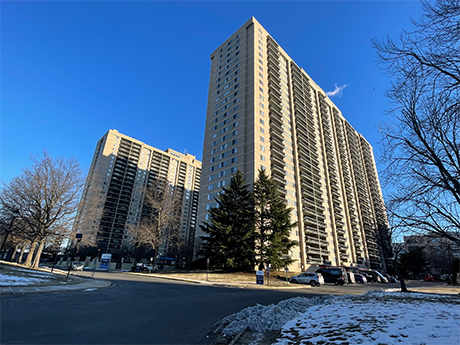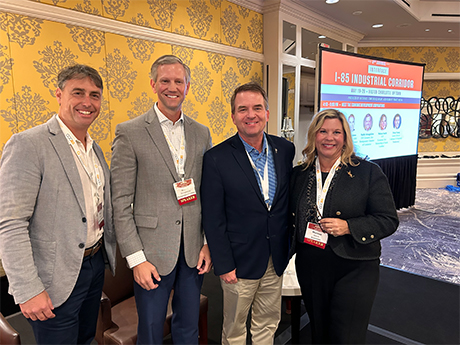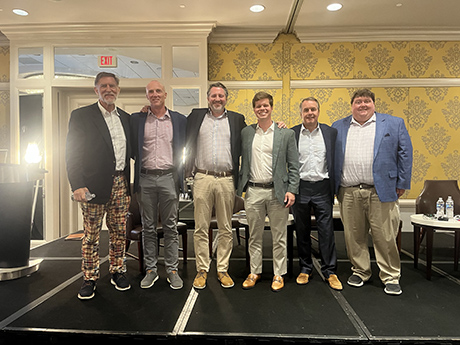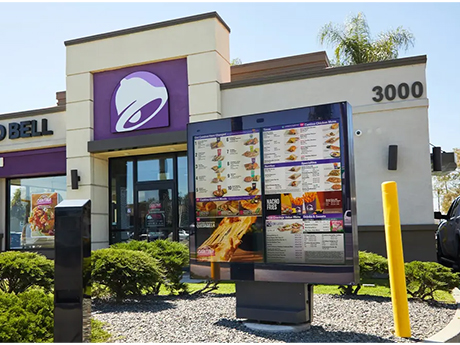ATLANTA — The seniors housing sector stands at a “curious” crossroads in terms of the current real estate cycle, according to Chris Guay, CEO of Vitality Living. The Brentwood, Tenn.-based company is a seniors housing owner-operator with communities located across the Southeast and Texas. Guay asserts that on one hand, seniors housing owners and operators are still healing from the supply-and-demand shocks stemming from the COVID-19 pandemic. On the other, the sector is standing on the precipice of the prophesied “silver tsunami,” a phenomenon wherein the baby boomer generation is aging into needing senior living care. Editor’s note: InterFace Conference Group, a division of France Media Inc., produces networking and educational conferences for commercial real estate executives. To sign up for email announcements about specific events, visit www.interfaceconferencegroup.com/subscribe. The oldest baby boomers are now turning 80, and Guay says that even if developers met the output of the highest point of the previous cycle annually, it still wouldn’t be enough to satisfy the wave of demand coming. “The silver tsunami is actually here,” says Guay. “Right now is probably the most interesting time in the industry that I can remember.” Guay’s comments came during the “power panel” at InterFace Seniors …
Southeast Feature Archive
Interview by John Nelson Commercial Property Assessed Clean Energy (C-PACE) financing is a lending option that is gaining traction in the commercial real estate lending world. This type of financing is beneficial for owners who are looking to finance their new construction or redevelopments with long-term debt. Rafi Golberstein, founder and CEO of PACE Loan Group (PLG), a C-PACE lender with offices in New York City, San Diego, Chicago and Minneapolis, says that what many borrowers are now finding out is how adaptable this loan structure is, especially when paired with traditional bank financing. “C-PACE as a product type is not just living and breathing — it’s expanding,” says Golberstein. Originated in Berkeley, Calif., in 2008, C-PACE financing is now available in 40 states and Washington, D.C. It serves as an alternative funding source for commercial projects that qualify on the basis that they will result in reduced energy and water usage and greater building efficiency. C-PACE is not a federal program as it is overseen at the state or local level, with some states allowing local governments to administer the program. “States are making their legislation more broad, which allows us to get more projects done and larger checks …
Affordable HousingDistrict of ColumbiaFeaturesHeartland Feature ArchiveMultifamilyMultifamily & Affordable Housing Feature ArchiveNortheast Feature ArchiveSoutheastSoutheast Feature ArchiveTexas & Oklahoma Feature ArchiveWestern Feature Archive
Why Fannie Mae, Freddie Mac Believe the Wind Is at Their Back
by John Nelson
Fannie Mae and Freddie Mac are adopting a more pro-business approach when it comes to closing multifamily loans in 2025 than in recent years, when sources say they were more selective. The two government-sponsored enterprises (GSEs) combined to produce 33 percent more multifamily loans in first-quarter 2025 compared with first-quarter 2024. “There is definitely a ‘volume on’ mindset at both shops,” says Landon Litty, director of agency sales at BWE. “This is a real positive for borrowers.” For Fannie Mae, the volume of multifamily loans totaled $11.8 billion in the first quarter of 2025, compared with $10.1 billion in the first quarter of 2024. Meanwhile, Freddie Mac produced approximately $15 billion in multifamily loans in the first quarter, financing around 144,000 rental units, well above the approximately $10 billion produced in first-quarter 2024. “The first quarter of 2025 has been dynamic, with real-time adjustments to meet market needs while maintaining a focus on soundness,” says a spokesperson at Freddie Mac Multifamily. Other sources attest that the GSEs are focusing on their sponsors more so than in previous years. T.J. Edwards, chief production officer for the multifamily finance division at Walker & Dunlop, says the agencies are proactively vetting first-time borrowers …
Affordable HousingConference CoverageFeaturesMultifamilyNorth CarolinaSoutheastSoutheast Feature Archive
Lenders Are Back in Action for Multifamily Development Deals, Says InterFace Panel
by John Nelson
CHARLOTTE, N.C. — In its first-quarter report, property management research firm RealPage stated that the “supply wave for multifamily was cresting” as the U.S. apartment sector set a record in terms of units absorbed (138,302), outpacing deliveries (116,092). A year prior, RealPage reported that deliveries (135,652) outstripped absorption (103,826) in first-quarter 2024. Will Block, partner and co-founder of Olympus Development Co., said that the flip in the U.S. apartment market’s supply-demand dynamic the past 12 months has made all the difference in terms of lenders’ perception. Editor’s note: InterFace Conference Group, a division of France Media Inc., produces networking and educational conferences for commercial real estate executives. To sign up for email announcements about specific events, visit www.interfaceconferencegroup.com/subscribe. “It couldn’t be more different what it looked like a year ago trying to capitalize deals in tertiary markets,” said Block. “Last year we would call 50 lenders with the hope of one to get to do it at terms that we didn’t like with ridiculous deposit requirements. I probably get four or five cold calls a week from bankers now.” Block’s comments came during the development panel at InterFace Carolinas Multifamily, an annual networking and information conference held on May 21 …
By Brett Reese of CP Group After several years of disruption, the office market is beginning to show meaningful signs of recovery. Market fundamentals are strengthening, sentiment is shifting and the data backs it up. Office sales totaled $64.3 billion last year, up nearly 21 percent from 2023, according to MSCI Real Assets. Net absorption also turned positive, with 6.5 million more square feet of U.S. office space leased than vacated, marking the most substantial annual gains since 2019. Rent growth has been substantial across key markets, lenders are re-engaging and marquee transactions are driving capital back to the sector. These are the first broad signs that the innovative strategies employed by experienced owners and operators over the past five years are beginning to pay off. Sun Belt momentum In Southeastern markets like South Florida and Atlanta, recovery outpaces national trends, driven by location, flexibility and amenitized space. Hard-learned lessons by tenants, lenders and landlords have reshaped the market. As the industry recalibrates, operators with conviction and capital can double down on what’s working. Debt is returning Perhaps the most significant harbinger of market recovery is the thawing of the debt markets. Just a year ago, lenders willing to underwrite …
InterFace Panel: Multifamily Operators Are Utilizing Fee Transparency, Concessions to Woo Renters
by John Nelson
CHARLOTTE, N.C. — The federal government has been cracking down on price gouging in recent months. Last month, the Federal Trade Commission (FTC) implemented a rule to ban “junk fees” from live event platforms like Ticketmaster, as well as hotels and other short-term lodging. This rule precludes the vendor or property owner/management firm from being able to charge hidden fees on the back end by requiring them to put the total cost upfront, inclusive of all mandatory fees and charges. And in January, the U.S. Justice Department (DOJ), along with 10 state attorneys general, followed up on its 2023 antitrust lawsuit with RealPage by adding six of the nation’s largest property managers to the lawsuit. Editor’s note: InterFace Conference Group, a division of France Media Inc., produces networking and educational conferences for commercial real estate executives. To sign up for email announcements about specific events, visit www.interfaceconferencegroup.com/subscribe. The amended complaint alleges that the companies — Greystar; Blackstone’s LivCor LLC; Camden Property Trust; Cushman & Wakefield Inc. (formerly operating independently as Pinnacle); Willow Bridge Property Co. (formerly Lincoln Residential); and Cortland Management LLC (Cortland) — used RealPage’s pricing algorithms via the company’s YieldStar platform to share sensitive data and coordinate pricing strategies, …
Tariffs Make ‘Challenging Deals Even More Challenging’ for Economic Development Officials, Says InterFace Panel
by John Nelson
CHARLOTTE, N.C. — Tariffs are at the forefront of the U.S. economic landscape as they impact costs and timelines for a multitude of industries. For the industrial real estate sector, developers and tenants alike are monitoring the severity at which tariffs can complicate their everyday business activity, thus economic development officials are playing a crucial role in helping companies mitigate those costs and delays. “A lot of our business comes down to reducing risks for companies,” said Melissa Smith, senior vice president of the Economic Development Partnership of North Carolina. “There’s a lot of scrambling due to tariffs. They make already challenging deals even more challenging. We have to be ready to help [companies] navigate through these challenges so that they can make a successful decision.” Editor’s note: InterFace Conference Group, a division of France Media Inc., produces networking and educational conferences for commercial real estate executives. To sign up for email announcements about specific events, visit www.interfaceconferencegroup.com/subscribe. Smith’s comments came on the opening night of InterFace I-85 Industrial Corridor, a two-day networking and information event held at the Hilton Charlotte Uptown hotel on May 19-20. Brian Young, senior director of Cushman & Wakefield’s Greenville office, moderated the discussion called …
Competition for Labor, Land Is Reshaping the I-85 Industrial Corridor, According to InterFace Panelists
by Abby Cox
CHARLOTTE, N.C. — Stretching from Alabama to Atlanta, through the Carolinas and into Virginia, the I-85 corridor has long been a backbone of industrial growth in the Southeastern United States. Once celebrated as a magnet for logistic hubs, manufacturing plants and warehouse developments, this valuable category of real estate is now showing signs of strain. Editor’s note: InterFace Conference Group, a division of France Media Inc., produces networking and educational conferences for commercial real estate executives. To sign up for email announcements about specific events, visit www.interfaceconferencegroup.com/subscribe. During the COVID-19 pandemic, industrial real estate, especially warehouses and distribution centers, saw a dramatic surge in demand due to a rise in e-commerce, inventory stockpiling due to supply chain issues and lower interest rates. Fast forward five years later, the industrial market is now experiencing a slowdown due to new pressures that are reversing or slowing down many of those trends. “People are concerned about making a decision today without knowing what’s going to happen tomorrow,” said John Coleman, senior vice president of Graham &. Co. Coleman specializes in representing both tenants and landlords across the Birmingham and Montgomery industrial markets in Alabama. Coleman’s comments came while on stage during the closing panel at InterFace …
Affordable Housing Developers Aim to Control What They Can Control, Say InterFace Panelists
by John Nelson
ATLANTA — Interest rates. Tariffs. Natural disasters. These three factors alone frighten any developer, let alone those who are tasked with delivering our nation’s affordable housing supply. Just to get to the ribbon-cutting ceremony, developers have an uphill climb. They have to obtain the land outright or in a ground lease agreement, navigate the permitting and entitlement processes, overcome any neighborhood pushback, raise equity and borrow the necessary capital and then build these communities on time and on budget. Editor’s note: InterFace Conference Group, a division of France Media Inc., produces networking and educational conferences for commercial real estate executives. To sign up for email announcements about specific events, visit www.interfaceconferencegroup.com/subscribe. “We try to stay in control of what we’re in control of,” said Christopher Byrd, Southeast region development director of LDG Development, an affordable housing developer based in Louisville, Ky. “As long as we are in the right markets with the right growth and the right partners, we are safe and insulated.” Byrd’s comments came while on stage during the development panel at InterFace Affordable Housing Southeast, a networking and information conference held at the Cobb Galleria Centre in Atlanta on Tuesday, May 7. Kelly Williams, vice president of …
By Casey Smallwood of SRS Real Estate Partners In today’s fiercely competitive quick-service restaurant (QSR) market, digital transformation and artificial intelligence (AI) are reshaping how brands operate, engage with customers and create value. An industry once defined by speed and consistency is now being reshaped by data, automation and intelligent personalization. Across the country, QSRs are embracing cutting-edge technologies to improve operations, enhance the customer experience and maximize profitability. From mobile ordering apps to AI-powered drive-thru automation and predictive inventory management, these innovations are redefining the QSR business model. To stay competitive and relevant in today’s fast-changing market, franchise operators, developers and commercial real estate investors must understand and adapt to these technology-driven shifts. At the heart of this evolution is digital transformation — the integration of digital technology across all aspects of the business. In the QSR landscape, this includes everything from mobile ordering apps, digital menu boards to contactless payment systems, smart kitchen equipment and sophisticated customer relationship management (CRM) tools. Unlike full-service restaurants that emphasize ambiance and table service, QSRs succeed by offering speed, convenience and consistency. Digital transformation amplifies these core strengths, allowing operators to serve more customers faster and more accurately while also collecting and …


